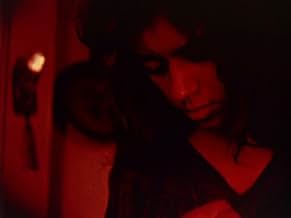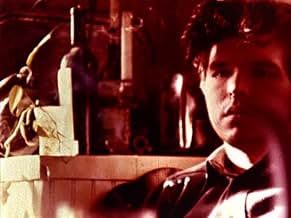Images of two women, two men, and a gray cat form a montage of rapid bits of movement. A woman is in a bedroom, another wears an apron: they work with their hands, occasionally looking up. A... Read allImages of two women, two men, and a gray cat form a montage of rapid bits of movement. A woman is in a bedroom, another wears an apron: they work with their hands, occasionally looking up. A man enters a room, a woman smiles. He sits, another man sits and smokes. The cat stretche... Read allImages of two women, two men, and a gray cat form a montage of rapid bits of movement. A woman is in a bedroom, another wears an apron: they work with their hands, occasionally looking up. A man enters a room, a woman smiles. He sits, another man sits and smokes. The cat stretches. There are close-ups of each. The light is dim; a filter accentuates red. A bare foot st... Read all
- Director
- Stars
Featured reviews
There isn't all too much to say about this film, since it is basically just your typical Brakhage affair, it contains a lot of great visuals and editing tricks that Brakhage is famous for. If you're at all a fan of his, this film will likely interest you.
It's probably never a good idea to blend unrelated works of art, but I must admit that the Beatles' "Revolution 9" harmonised perfectly with the film's images, and even to a certain extent enhanced them. Brakhage's films often capture instants in time prolonging, accelerating, and repeating these moments and so creating a rhythm of disjointed time that is beautifully complemented by the nonsensical, psychedelic sound collage of John Lennon's avant-garde oddity, which makes frequent use of tape loops and backmasking. Brakhage's montage is unrelenting, each shot disappearing from the screen as often as it came, but, perhaps because he recycles certain frames on numerous occasions, the end result is neither jarring nor disorientating that Brakhage had no intentions of telling a conventional narrative was, given his stylistic choices, certainly beneficial. The sensuality of the colour palette left me feeling rather flushed, as though I'd been sitting with an intense fluorescent light beaming against the back of my neck.
One side is his gift for compositions, lighting and likewise usage of color. Scenes in this film are given a very rough, but very precise, use of reds, magenta's, burnt oranges and yellows, whites, darks, and often in strange close-ups or 'intimate' (if one could call them that) medium shots. Some of the shots are so detailed, and at the same time the other side to his style comes through- his use of montage. One could just say editing, but with a man like Brakhage, montage is really what applies, at least for this film (some of his less-than-one-minute films are even more intricate with shots, and then over like that).
It leads one into realizing why there isn't as much substance as style to the film, as it's all too immense to take in with symbols and such. Besides, who wants to focus on 'substance' when it is not only replaced but inhabited by the style? I loved the speed that was given in most of the film, and then how it went along further. It's really sensual as well with the imagery, even as it is mostly cut a cat, and it's fur, and Brakhage's wife, and so on.
In short, the film doesn't necessarily 'make sense' on the first viewing, but why carp. This is obviously the kind of grade-A underground art-film directing that likely inspired the likes of Darren Aronofsky- taking editing over the invisible line of what's traditional in montage, and trying to get the audience successfully with them.
Did you know
- TriviaThis film is included on "By Brakhage: an Anthology", which is part of the Criterion Collection, spine #184.
- ConnectionsFeatured in By Brakhage: An Anthology, Volume One (2003)
Details
Contribute to this page
















